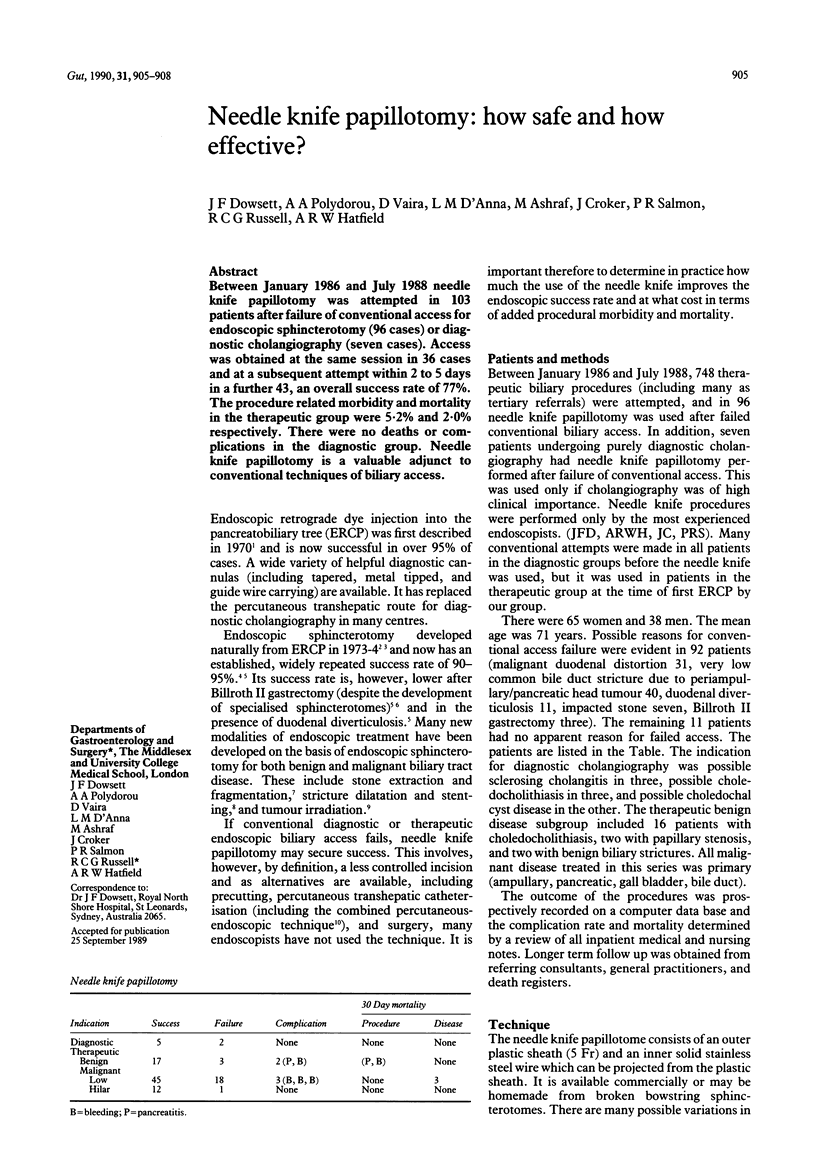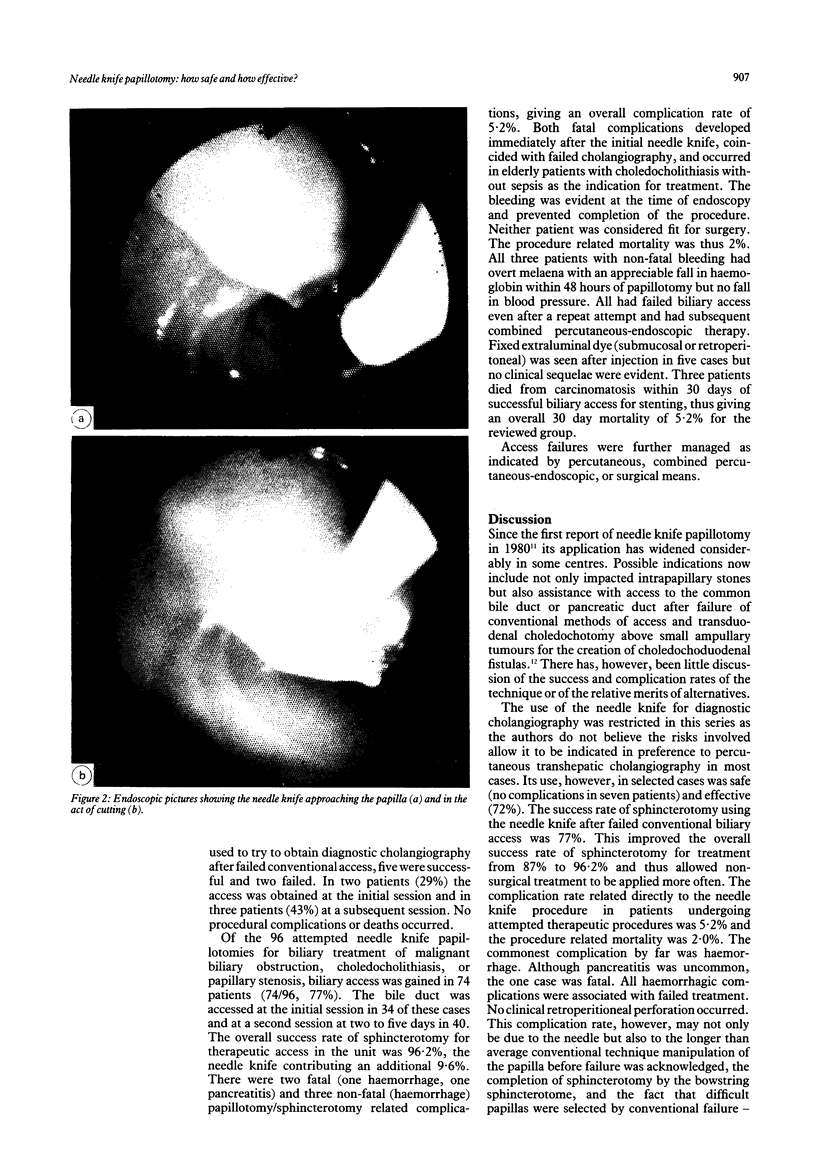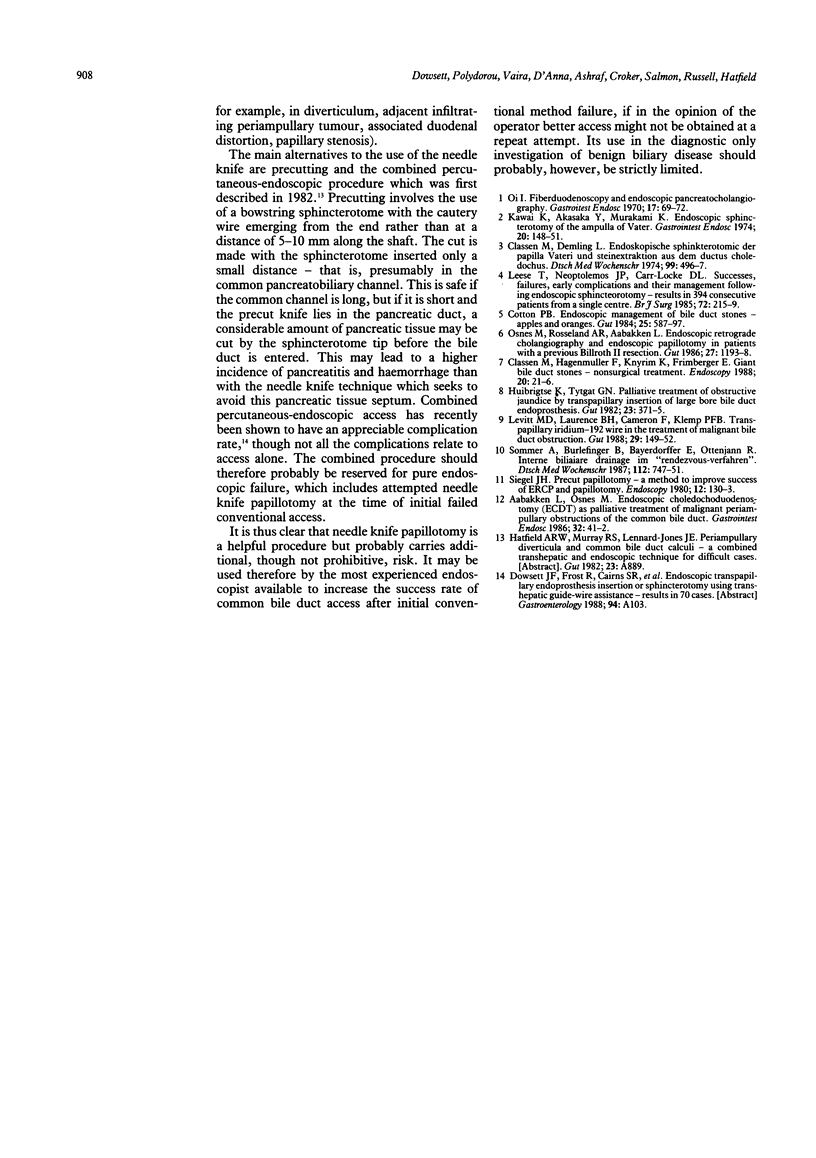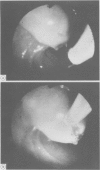Abstract
Between January 1986 and July 1988 needle knife papillotomy was attempted in 103 patients after failure of conventional access for endoscopic sphincterotomy (96 cases) or diagnostic cholangiography (seven cases). Access was obtained at the same session in 36 cases and at a subsequent attempt within 2 to 5 days in a further 43, an overall success rate of 77%. The procedure related morbidity and mortality in the therapeutic group were 5.2% and 2.0% respectively. There were no deaths or complications in the diagnostic group. Needle knife papillotomy is a valuable adjunct to conventional techniques of biliary access.
Full text
PDF



Images in this article
Selected References
These references are in PubMed. This may not be the complete list of references from this article.
- Aabakken L., Osnes M. Endoscopic choledochoduodenostomy (ECDT) as palliative treatment of malignant periampullary obstructions of the common bile duct: a follow-up study. Gastrointest Endosc. 1986 Feb;32(1):41–42. doi: 10.1016/s0016-5107(86)71729-x. [DOI] [PubMed] [Google Scholar]
- Classen M., Demling L. Endoskopische Sphinkterotomie der Papilla Vateri und Steinextraktion aus dem Ductus choledochus. Dtsch Med Wochenschr. 1974 Mar 15;99(11):496–497. doi: 10.1055/s-0028-1107790. [DOI] [PubMed] [Google Scholar]
- Classen M., Hagenmüller F., Knyrim K., Frimberger E. Giant bile duct stones--non-surgical treatment. Endoscopy. 1988 Jan;20(1):21–26. doi: 10.1055/s-2007-1018119. [DOI] [PubMed] [Google Scholar]
- Cotton P. B. Endoscopic management of bile duct stones; (apples and oranges). Gut. 1984 Jun;25(6):587–597. doi: 10.1136/gut.25.6.587. [DOI] [PMC free article] [PubMed] [Google Scholar]
- Huibregtse K., Tytgat G. N. Palliative treatment of obstructive jaundice by transpapillary introduction of large bore bile duct endoprosthesis. Gut. 1982 May;23(5):371–375. doi: 10.1136/gut.23.5.371. [DOI] [PMC free article] [PubMed] [Google Scholar]
- Kawai K., Akasaka Y., Murakami K., Tada M., Koli Y. Endoscopic sphincterotomy of the ampulla of Vater. Gastrointest Endosc. 1974 May;20(4):148–151. doi: 10.1016/s0016-5107(74)73914-1. [DOI] [PubMed] [Google Scholar]
- Leese T., Neoptolemos J. P., Carr-Locke D. L. Successes, failures, early complications and their management following endoscopic sphincterotomy: results in 394 consecutive patients from a single centre. Br J Surg. 1985 Mar;72(3):215–219. doi: 10.1002/bjs.1800720325. [DOI] [PubMed] [Google Scholar]
- Levitt M. D., Laurence B. H., Cameron F., Klemp P. F. Transpapillary iridium-192 wire in the treatment of malignant bile duct obstruction. Gut. 1988 Feb;29(2):149–152. doi: 10.1136/gut.29.2.149. [DOI] [PMC free article] [PubMed] [Google Scholar]
- Osnes M., Rosseland A. R., Aabakken L. Endoscopic retrograde cholangiography and endoscopic papillotomy in patients with a previous Billroth-II resection. Gut. 1986 Oct;27(10):1193–1198. doi: 10.1136/gut.27.10.1193. [DOI] [PMC free article] [PubMed] [Google Scholar]
- Siegel J. H. Precut papillotomy: a method to improve success of ERCP and papillotomy. Endoscopy. 1980 May;12(3):130–133. doi: 10.1055/s-2007-1021728. [DOI] [PubMed] [Google Scholar]
- Sommer A., Burlefinger R., Bayerdörffer E., Ottenjann R. Interne biliäre Drainage im "Rendezvous-Verfahren". Kombinierte transhepatische endoskopisch-retrograde Methode. Dtsch Med Wochenschr. 1987 May 8;112(19):747–751. doi: 10.1055/s-2008-1068132. [DOI] [PubMed] [Google Scholar]



